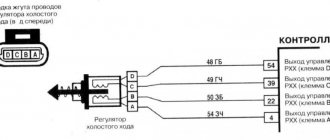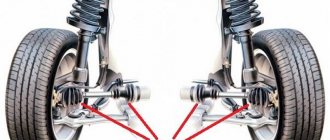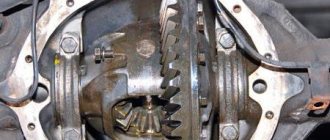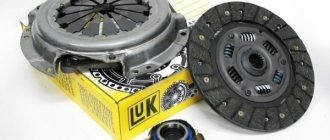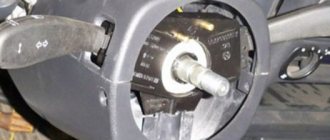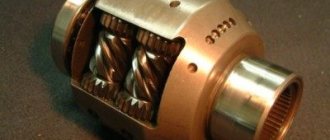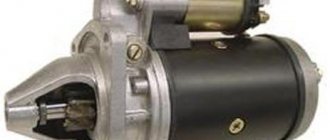Fire arresters, flame arresters and fire fuses are used as fire-fighting equipment on vertical tanks for storing explosive petroleum products.
This equipment is the first stage of fire safety, which helps protect tanks and stored product from explosion and fire. The main purpose of fire arresters of various types is to prevent a spark or flame from entering the gas space of a container and causing fire hazards.
What is a flame arrester?
A flame arrester is a type of resonator, its job is to receive and process exhaust gases from the engine, cool and slow them down. The flame arrester is installed immediately after the exhaust pipe of the muffler, in the same place where the catalyst (catalytic converter) is usually located. This element of the vehicle exhaust system operates under extremely harsh conditions, which determines the features of its design.
A flame arrester is a small-diameter perforated pipe, which is enclosed in a durable (steel) casing. Between the perforated pipe and the housing there is a heat-resistant material that absorbs sound waves and vibration. The ends of the flame arrester are welded, the device has an inlet and an outlet, this must be taken into account in order to install it correctly. As a rule, various types of mineral wool are used as absorbent material. The design of a flame arrester with diffusers (funnels) instead of conventional perforations is considered more advanced; with their help, the temperature of the gas stream is reduced more effectively. Sometimes the device may not be installed on the intake pipe or main line, but directly in the exhaust manifold block. This is a manifold flame arrester.
Flame arrestor circuit
The etiology of the name of this part is not entirely clear. Why exactly “flame arrester”? In English, a flash suppressor is commonly referred to as a "resonator", "front or pre-silencer".
The temperature of the exhaust flowing from the combustion chamber of the engine is extremely high, in addition, the gases move at high speed. The flame arrester must accept them, cool them, reduce the speed, and also mix the flows emanating from different cylinders. In addition to internal loads, this unit is also affected by external loads, and they are also very serious: constant vibration from a running engine, as well as a hellish saline solution that constantly floods the hot flame arrester in winter.
Therefore, the material from which the flame arrester is made must withstand high temperatures (and temperature changes), as well as exposure to an aggressive environment. Typically, heat-resistant stainless steel is used for this car part.
There are several types of flame arresters:
- Active. This is a single-layer device and uses synthetic fibers or mineral wool to reduce vibration. The disadvantage of such flame arresters is their short durability - the filler simply burns out from high temperatures. However, while they work, such flame arresters do their job well.
- Reactive. Their work is based on the reflection of sound waves. Such products are good for their durability.
This is interesting: Fire-fighting water curtains, their types and design standards
Installing a flame arrester
If we are talking about replacing the catalyst, then the main reason why they replace it with a flame arrester, and do not weld a simple pipe of the required diameter in the place where this element of the exhaust system is installed, is that when installing a simple pipe, the vibration of the car will increase significantly and the noise during engine operation. Also, the temperature of the exhaust gases will be distributed to other elements of the system, which will lead to rapid wear of its components.
When installing a flame arrester, you must pay attention to the following points:
- How is a used catalyst or flame arrester installed? Is it bolted, clamped, or permanently welded to the pipe? If fastening is done with bolts or clamps, then the gaskets on the flanges must be replaced. If the element is simply welded to the pipe, then it must be cut off and the operation of welding the new part must be entrusted to trusted specialists. It’s better not to do this yourself if you are an amateur welder; experience is needed here.
- The system must be completely sealed and well secured, therefore, after installation work has been completed, it is better to seal the seams and joints with a special sealant.
- Do not tighten the pipe elements too much; this may lead to deformation of the muffler line and squeezing out the gaskets.
- If you install a flame arrester instead of a catalyst, then it is better to install a collector one, which is specifically designed for installation next to the exhaust manifold, where catalysts are usually located.
- You should also pay attention to the car engine. If the cylinder volume exceeds 2 liters, then a universal flame arrester cannot be installed on such a car; either a standard one, specifically for the brand and technical characteristics of this car, or a homemade one will do.
- On cars with a lambda probe (a sensor for measuring the percentage of oxygen in exhaust gases), you need to pay attention to the place where the sensor is installed; if it is installed only in the exhaust manifold, then there will be no problems with it, but if the sensor is installed after the catalyst, after replacement on the flame arrester, it will be necessary to make a modification in the electronic control unit or install a decoy element in front of the sensor.
We have discussed the main points, advantages and disadvantages of this element of the exhaust system. Based on this, each driver himself can make a decision in his own favor and in favor of his pocket, or in favor of the environment and the public. The flame arrester does an excellent job of doing what it is designed to do, but does not have the properties of a catalyst. The choice is yours.
How does a flame arrester work and what device does it have?
The design of the flame arrester is the same as that of the resonator. Inside there are traps whose task is to reduce the temperature of the gas stream. The body of the product is two-layer. The space between the layers is filled with a special filler that is sufficiently resistant to elevated temperatures. The design suppresses characteristic ringing sounds. Sound waves are absorbed by special material placed inside the system.
In the production of the element, high quality metal with good resistance to corrosion processes is used. The flame arrester body cannot be affected by chemicals, salt, moisture or dirt. Aluminum is used in the manufacture of some models, which significantly increases the service life of the product. Such components are more expensive.
Some car enthusiasts use homemade devices, hollowing out the factory filling and installing their own system. The simplest version of the device is this: a metal pipe with a large number of holes drilled in it. In the internal part of the flame arrester there are several partitions, the task of which is to extinguish the flow rate of hot gas. The body is welded on both sides, there are only 2 holes - for the entry and exit of gases.
The installation of the device is carried out according to a certain algorithm. Its size depends on the volume of the power unit and the strength of the exhaust flow. If you choose an inappropriately sized damper, there is a risk of not getting any results.
Is it possible to knock out the catalyst and not install a flame arrester?
Actually, the topic has been covered for a long time - OF COURSE IT IS POSSIBLE. However, as always, there are a few disadvantages that you will encounter.
- Increased exhaust sound. No, don’t think that your engine will roar like a sports car; the catalyst (like the flame arrester itself) dampens only 5 to 7% of the sound wave. That is, it will make noise, but not much. However, if you are a picky driver, it will really get annoying.
- Reduced service life of the entire muffler as a whole. Why? Yes, it’s simple - a Catholic neutralizer (also a flame arrester) traps hot gases, cooling them. Further, the gases pass much cooler, that is, the metal of the entire remaining muffler “does not burn.” If you do not want to put either one or the other element. This means that you simply transfer hot gases further along the “pipe”. That is, it is likely that the resonators, the connection points of the muffler, will “burn” much faster.
Actually, for these reasons alone, it’s worth installing a flame arrester if you knock out your filter; it was invented for a reason.
Pros and cons of a flame arrester
First about the pros:
- Removing the old one and installing a new device will not be too costly for the car owner.
- The component is not demanding on fuel quality. Considering the quality of gasoline at our gas stations, this is a big advantage.
- Installing a catalyst leads to a loss of engine power, since numerous honeycombs create serious resistance to the movement of gases. When the catalyst is removed and the absorber is installed, the gases no longer encounter obstacles in the path and exit directly.
- A motor with a flame arrester is easier to operate. But malfunctions in its operation still occur due to incorrect ECU firmware. If the firmware is installed correctly, the system will work smoothly.
There are also disadvantages. The main one is environmental degradation.
Removing the catalyst will lead to an increase in the emission of harmful substances. In addition, when installing a damper, additional firmware for the control unit is required.
This is not required only when installing the decoy. The need for firmware is determined by the presence of sensors installed near the catalyst. After dismantling the catalyst, they begin to display an error message. This is at best; at worst, the engine will simply stop starting. After flashing the system, the problem goes away on its own. It is better to carry out this procedure by a specialist.
Installing a flame suppression device may reduce the life of the muffler. After dismantling the catalyst, hot gases begin to leave the system more actively, which leads to a decrease in the service life of almost all parts of the exhaust system.
Benefits of replacement
Replacing an expensive catalytic converter with a cheaper flame arrester makes a lot of sense.
The following advantages can be highlighted:
- The cost in the second case is 7-9 times lower, so the savings are obvious here.
- The catalyst reduces the power of the power unit because it creates an obstacle to the passage of exhaust gases, because of this, the “horses” can decrease by up to 7%. On the other hand, when replacing, the exhaust flow encounters virtually no resistance.
- The absence of an expensive filter element makes it possible to use gasoline with a lower octane number, since the more reliable, durable design is resistant to aggressive technical fluids.
- The flame arrester is characterized by strength, reliability, and durability. The possibility of its burning out and the occurrence of corrosion foci is practically eliminated.
Thus, the advantages of replacement are not too many, but they really work. Unstable operation of the power unit can be caused by incorrect settings of the electronic control unit, so it is necessary to make a new electronics setting when replacing devices.
Which flame arrester is better to choose?
When choosing a device, look at its shape. Flame arrestors come in flat and round shapes. With a round device, the car will drive silently. The flat version is suitable for those who want their car to be heard even in the neighboring yard when starting the engine.
A diffuser must be installed on the device. If it is present, the requirements for the heat resistance of the steel used are reduced. It is better not to buy homemade devices. The quality of the steel from which they are made, as a rule, leaves much to be desired.
When choosing, pay attention to the manufacturer, because the designs of different brands have differences. For example, Sprint products are highly resistant to corrosion due to the use of stainless steel and aluminum. But the MG-RACE company makes components from high-quality silicon fiber.
The principle of operation of a flame arrester is similar to a catalyst, but its structure is simpler. And it looks the part. Using a flame arrester has many more advantages than disadvantages, and the main advantage is its low cost.
Various types of flame arrester
At the moment, there are two main options:
- Immediately behind the collector - that is, the collector type, is now used very often, we can say that it is on 70% of cars.
- Main line - that is, it stands on a pipe (roughly in the middle), often used on turbocharged engines. After all, it requires maximum gas pressure from the engine, so it is often not installed on the exhaust manifold.
As a rule, the collector type is very simple in design, but the main ones can be more complex.
How long does a flame extinguisher last? Pros and cons of the device
Flame arrestors installed separately usually operate successfully for five to ten years. Collective flame arresters last less (up to five years), since they have to work in the “hottest” conditions. The lifespan of this car part can be even longer if it is made by a reputable company using high-quality materials. It is also necessary to take into account operating conditions, vehicle characteristics and mechanical effects on the product.
It should be noted that more often than the flame arrester itself, welds and exhaust pipes are destroyed.
Now a few words about the pros and cons of installing a flame arrester. The most significant advantage is the price of this device. By installing a budget flame arrester instead of an expensive catalyst, you can save a lot of money. The flame arrester is less demanding on fuel quality compared to the catalyst - this is its second absolute advantage. Since the quality of gasoline at our gas stations often leaves much to be desired, this advantage is quite significant. In addition, the flame arrester slightly increases engine power, since it has a direct-flow structure (and not a honeycomb, like a catalyst).
Of course, the flame arrester also has disadvantages (where would we be without them). The main one is environmental pollution. Without a catalyst, all outgoing exhaust gases go outside without any purification. So, if you care about clean air on the planet, then it is better to install a new catalyst.
To install a flame arrester, electric or gas welding is required, so doing it yourself is quite problematic. The installation of a manifold and a free-standing flame arrester is different because in the first case the exhaust manifold must be removed. However, it is hardly worth saving on this procedure: installing a collector flame arrester costs 6-8 thousand rubles, and a free-standing one costs 3-5 thousand rubles.
This is interesting: Fire doors. Classification. History of creation
The device of a classic flame arrester
The “straight” (that is, the first) type from our rating is considered classic. I will try to tell you more about its device:
- A straight pipe is taken and holes (or perforations) are drilled into it.
- Then the body is made, as I indicated above, from two sheets of iron, and a “spacer” between them. Welded in the form of a cylinder or ellipse.
- Insert the pipe into this “barrel”. And they lay a special, non-flammable material on the sides, usually basalt wool.
- Then the top and the barrel are welded, leaving only one pipe.
That's all, gases enter the pipe and settle in the material through the perforation. Giving away temperature and part of the sound wave.
The principle of operation of the fire arrester
Features of the fire barrier installed on a tank with petroleum products:
- Sparks and flames, passing through channels with a small cross-sectional area, are crushed into small parts. Due to this, the temperature of the gas-air flow decreases sharply.
- During detonation combustion, the narrow channels of the fire arrester crush the shock wave front.
When choosing a fire arrester circuit, specific operating conditions are taken into account. The effect of extinguishing sparks and flames depends mainly not on the length of the channels, but on their cross-sectional area. The narrower the channel, the faster the quenching process occurs. However, if there is a possibility of a large amount of high-temperature combustion products passing through the barrier, then the quenching efficiency begins to be affected by the length of the channels. In this case, a barrier with long channels is required. When hot gases pass through them, they reduce their temperature to a safe limit.
show all
Types of fire arresters and flame arresters
- fire arrester OP-AA
- fire arrester OP-AAN
- flame arrester PP
- liquid fire fuse
- fire communication fuse POC
Fire arresters OP
Fire barriers OP-AA and OP-AAN protect the gas space of tanks from penetration of sparks or flames. The fire-retardant element located in the housing consists of corrugated and flat tapes that retain heat from the fire and extinguish it. Aluminum is used for their manufacture. The fire arrester OP-AAN is dismountable, which allows the cassette to be inspected and replaced if necessary.
| Fire arrestor OP-AA | Options | OP-50AA | OP-80AA | OP-100AA |
| Nominal size DN | 50 | 80 | 100 | |
| Capacity at air flow resistance 118 Pa, m 3 /h | 25 | 60 | 100 | |
| Height, N, mm | 80 | 80 | 94 | |
| Diameter, D, mm | 140 | 194 | 207 | |
| Diameter of mounting holes | 14 | 18 | 18 | |
| Number of mounting holes | 4 | 4 | 4 | |
| Serviceability retention time, min., not less | 10 | |||
| Weight, kg, no more | 1,3 | 2,62 | 3,6 | |
| Fire arrestor OP-AAN | Options | OP 50AAN | OP 80AAN | OP 100AAN | OP 150AAN | OP 200AAN | OP 250AAN | OP 300AAN | OP 350AAN | OP 500AAN | |
| Nominal size DN | 50 | 80 | 100 | 150 | 200 | 250 | 300 | 350 | 500 | ||
| Capacity at air flow resistance 118 Pa, m 3 /h | 100 | 150 | 200 | 215 | 380 | 600 | 750 | 900 | 2200 | ||
| Height, H, mm | 172 | 200 | 197 | 231 | 255 | 243 | 275 | 419 | 317 | ||
| Diameter, Dн, mm | 160 | 214 | 230 | 303 | 375 | 450 | 530 | 610 | 858 | ||
| Connecting dimensions, mm | D D1 dn, pcs. | 141 110 14 4 | 184 150 17 4 | 205 170 17 4 | 262 225 18 4 | 315 280 18 4 | 370 335 18 6 | 435 395 22 6 | 485 445 22 6 | 644 600 22 16 | |
| Serviceability retention time, min., not less | 10 | ||||||||||
| Weight, kg, no more | 3 | 5 | 6,1 | 10 | 16 | 27 | 30 | 45 | 74 | ||
Flame arrestor PP
PP flame arresters are temporary fire arresters that prevent flames from penetrating into the gas space of tanks. Attached using flanges to mounting pipes; A gasket is installed between the flange and the body, which ensures tightness.
The fire retardant element is made of flat or corrugated tapes and can be made of aluminum or stainless steel. The established service life of PP flame arresters made of aluminum alloys is 5 years, and those made of stainless steel are 10 years.
| Flame arrestor PP | Options | PP-50 AA | PP-100 AA | PP-500 AA |
| Conditional bore (DN), mm | 50 | 100 | 500 | |
| Throughput, m 3 /h | 25 | 100 | 2200 | |
| Length (D), mm | 92 | 148 | 910 | |
| Height (L), mm | 80 | 423 | ||
| Weight, kg | 1,3 | 1,5 | 93 | |
Fire liquid fuses POZH
Liquid fire arresters are used to prevent a possible diesel or gasoline storage tank fire that may occur when gas or vapor is released into the atmosphere. They can be made in cast iron or aluminum housing. The blocking element is made of aluminum tapes, which accumulate the heat of the flame and extinguish it.
Installation is carried out on the receiving pipeline.
| Liquid fire fuse POZH | Options | POZH–80 |
| Conditional diameter, DN | 80 | |
| Pressure, MPa | 0,25 | |
| Throughput at air flow resistance 118 Pa, m³/h | 80 – 100 | |
| Height (H), mm | 94 | |
| Diameter (D), mm | 207 | |
| Diameter of mounting holes | 18 | |
| Number of mounting holes | 4 | |
| Diameter of mounting holes | 170 | |
| Weight, kg | 3,6 | |
| Serviceability retention time, min., not less | 10 | |
| Established service life, years | 8 |
Communication fire fuse POK
Fire fuses POK are installed on oil pipelines to prevent the movement of flame along it. The maximum pressure in the pipeline is up to 1.6 MPa.
Their design is more reinforced, since the movement of the working medium occurs at high speed and at high pressure. Having minimal hydraulic resistance, the liquid flows freely.
The fire retardant element has high heat resistance and fire resistance. As the flame passes through the flame-extinguishing element, the temperature drops below the flash point of the working product. Due to this, extinction occurs.
Fire fuses POK are manufactured in climatic versions U and UHL of placement category 1.
| Communication fire fuse POK | Options | POK-50 | POK-80 | POK-100 | POK-150 | POK-200 | POK-250 | POK-300 | POK-350 | POK-500 | |
| Nominal size DN | 50 | 80 | 100 | 150 | 200 | 250 | 300 | 350 | 500 | ||
| Capacity at air flow resistance 118 Pa, m 3 /h | 25 | 75 | 100 | 215 | 380 | 600 | 300 | 900 | 2950 | ||
| Overall dimensions, mm | D.H. | 215 | 245 | 280 | 335 | 460 | 520 | 600 | 710 | 840 | |
| H | 300 | 303 | 380 | 430 | 490 | 495 | 575 | 737 | 820 | ||
| Connecting dimensions, mm | D | 160 | 195 | 215 | 280 | 335 | 405 | 460 | 520 | 710 | |
| D1 | 125 | 160 | 180 | 240 | 295 | 355 | 410 | 470 | 650 | ||
| d | 18 | 18 | 18 | 22 | 22 | 26 | 30 | 26 | 33 | ||
| n | 4 | 8 | 8 | 8 | 12 | 12 | 12 | 16 | 20 | ||
| Weight, kg, no more | 20 | 28 | 39 | 55 | 113 | 145 | 245 | 290 | 545 | ||
Installation of fire arresters
They are mounted on the roof of vertical tanks under the breathing or safety valve and are attached to the mating flanges using bolts through a gasket. To protect pipelines under pressure up to 1.6 MPa, they are installed in the area where the gas-air mixture may escape.


